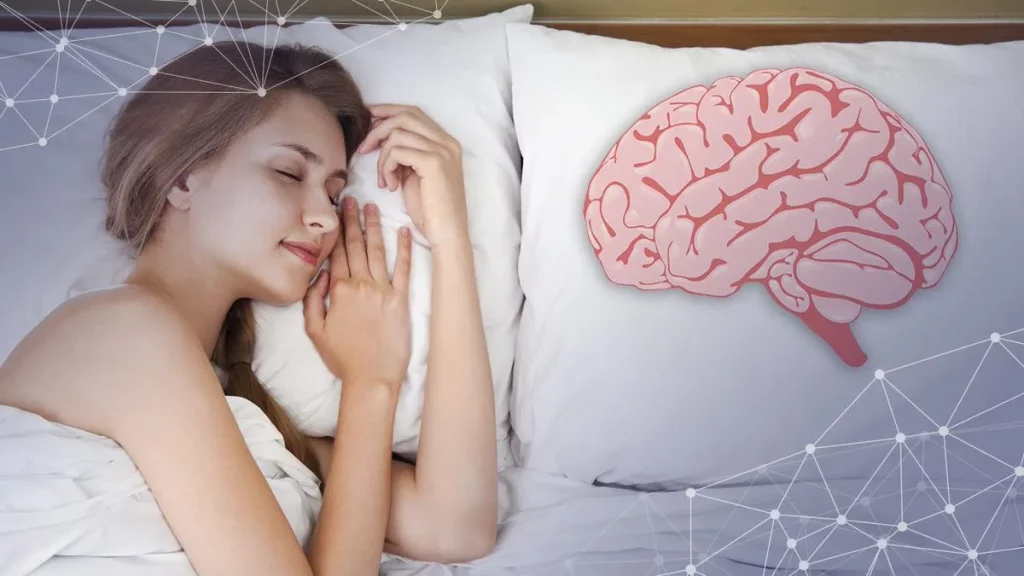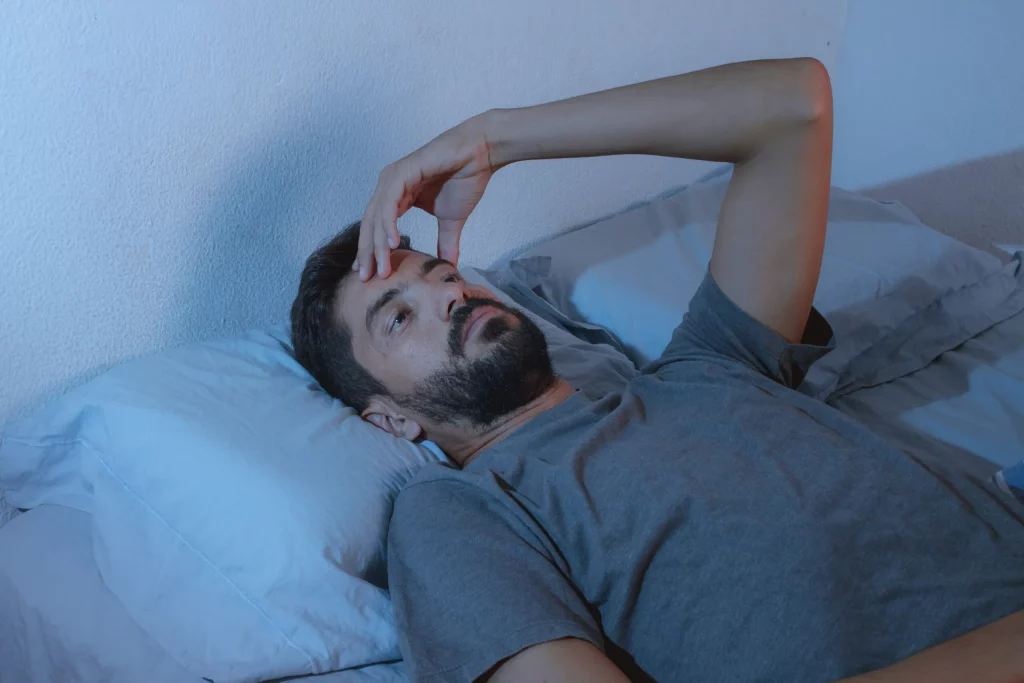Vector Sleep Clinic Discover the Power of Uninterrupted Sleep
Unlock the Magic of Restful Nights: Where Dreams Meet Rejuvenation
- Licensed and Insured
- Reliable
- Trustworthy
- Family Owned
When To Seek Help: Identifying the Signs That Lead You to a Sleep Clinic
Persistent Insomnia
If someone is having trouble falling asleep, staying asleep, or experiencing non-refreshing sleep for a prolonged period of time.
Daytime Fatigue or sleepiness
Constant tiredness, lack of energy, or an inability to stay awake during the day could indicate a sleep disorder.
Snoring or Breathing Problems
Loud snoring, gasping for air during sleep, or having a partner notice that you seem to stop breathing at times during sleep could be signs of sleep apnea, which would warrant a visit to a sleep clinic.
Sleep-Related Movements or Behaviors
If a person is experiencing restless legs syndrome, sleepwalking, night terrors, or other unusual behaviors during sleep, they may seek professional help.
Effects on Mental Health
Sleep disorders can lead to or exacerbate mental health issues like depression or anxiety. If someone notices a decline in their mental health and is also having sleep problems.
Impact on Day-to-Day Life
If sleep problems are interfering with work, school, relationships, or overall quality of life.
Medical Referral
In some cases, a primary care physician or psychiatrist may refer a patient to a sleep clinic if they suspect a sleep disorder.
Accidents due to Sleepiness
If a person has had an accident (like a car accident or a fall) due to excessive sleepiness, they might be motivated to seek help from a sleep clinic.
Shift Work Sleep Disorder
People who work non-traditional hours (like overnight shifts or rotating shifts) might have trouble sleeping or staying awake, leading them to seek professional help.
Sleep Disorders: Understanding the Problem
We know that today’s fast-paced life leads to sleep disorders for many, negatively affecting health and productivity. Disorders like insomnia, sleep apnea, and others heighten risks of serious health issues such as obstructive sleep apnea, restless leg syndrome, and hypopnea.
It’s a tough reality, but we at Vector Sleep Clinic are here to help.
Restless Leg Syndrome (RLS) is a neurological disorder characterized by an uncontrollable urge to move the legs accompanied by uncomfortable sensations. It tends to occur when the individual is at rest or during the night, resulting in difficulty falling asleep and obtaining quality sleep. This condition affects a significant portion of the population, with estimates suggesting that about 10% of adults experience RLS symptoms. Sleep apnea, a potential risk factor for RLS, is also associated with breathing pauses and dry mouth during sleep.
The exact cause of RLS is not yet fully understood, but there are several factors that can contribute to its development. It is believed to have a genetic component with a family history of RLS being a common finding. Other potential causes include an imbalance of dopamine, a chemical messenger in the brain, as well as deficiencies in iron and other essential nutrients. Iron deficiency, as confirmed by a healthcare provider, is considered a significant risk factor.
The symptoms experienced by individuals with Restless Leg Syndrome (RLS) can vary in severity, ranging from mild discomfort to severely disruptive sensations. Common sensations include itching, throbbing, crawling, or tingling feelings in the legs. These sensations can be relieved, at least temporarily, by movement such as stretching, walking, or jiggling the legs. However, such relief is often short-lived, leading to a cycle of restlessness and disturbed sleep. RLS is commonly diagnosed and treated by a healthcare provider at a sleep center.
Treatment options for restless leg syndrome (RLS) aim to manage and alleviate the symptoms, as there is currently no known cure. Lifestyle changes such as regular exercise, avoiding caffeine and alcohol, and establishing good sleep hygiene can be beneficial. Medications may be prescribed to help manage symptoms in more severe cases, including dopaminergic agents, anticonvulsants, and opioids. It is important to work closely with a healthcare professional from a sleep medicine center to find the most suitable treatment plan, as individual responses may vary. Sleep center s specialize in diagnosing and treating sleep disorders such as restless leg syndrome.
Insomnia is a common disorder that affects millions of people worldwide, and it is characterized by difficulty falling asleep, staying asleep, or experiencing non-restorative sleep. As a professional content writer, I am well aware of the impact that insomnia can have on an individual’s overall well-being and functioning.
Insomnia can be caused by a variety of factors, including stress, anxiety, depression, and certain medical conditions. In today’s fast-paced world, many people find it difficult to unwind and relax before bedtime, leading to sleep disturbances. Additionally, lifestyle factors such as excessive caffeine consumption, irregular sleep schedules, and the use of electronic devices before bed can contribute to the development and persistence of insomnia.
The consequences of insomnia go far beyond feeling tired during the day. Chronic lack of sleep can have significant effects on cognitive function, mood, and overall quality of life. It can impair one’s ability to concentrate, make decisions, and perform at their best, whether it be at work or in personal relationships. Moreover, it can contribute to the development of mental health disorders, such as depression and anxiety.
Fortunately, there are various strategies and treatments available to help manage and overcome insomnia. These may include behavioral changes, such as establishing a consistent sleep routine, creating a relaxing bedtime environment, and practicing relaxation techniques. Additionally, cognitive behavioral therapy for insomnia (CBT-I) has been shown to be an effective treatment approach for many individuals. In some cases, medication may be prescribed for short-term relief, but it is important to address the underlying causes of insomnia for long-term success.
In conclusion, as a professional content writer, I understand the impact that insomnia can have on individuals’ lives and the importance of raising awareness about this common sleep disorder. By shedding light on the causes, consequences, and available treatments for insomnia, we can support those affected in finding the restful sleep they need for optimal health and well-being.
Sleep Apnea is a common yet serious sleep disorder that affects countless individuals worldwide. It is characterized by pauses in breathing or shallow breaths during sleep, which can occur multiple times throughout the night. These interruptions in breathing can last anywhere from a few seconds to a couple of minutes, leading to disrupted sleep patterns and a host of potential health issues.
There are three main types of sleep apnea: obstructive sleep apnea (OSA), central sleep apnea, and complex sleep apnea syndrome. OSA is the most prevalent form and occurs when the airway becomes blocked or collapses during sleep, usually due to relaxed throat muscles. This obstruction leads to a reduction in the flow of oxygen to the body, triggering the brain to momentarily wake the individual up in order to restore normal breathing.
Although sleep apnea can affect anyone, certain factors increase the risk of developing this condition. Obesity, smoking, excessive alcohol consumption, and a family history of sleep apnea are all potential risk factors. Additionally, age and gender also play a role, with older individuals and males being more prone to developing this sleep disorder.
The effects of sleep apnea can be far-reaching and extend beyond mere sleepiness. Chronic fatigue, morning headaches, difficulty concentrating, and irritability are all common symptoms that result from disrupted sleep patterns. Furthermore, sleep apnea has been linked to a range of serious health conditions, including high blood pressure, heart disease, stroke, and diabetes.
If left untreated, sleep apnea can have a detrimental impact on an individual’s overall quality of life and health. However, there are various treatment options available to manage this condition effectively. Continuous positive airway pressure (CPAP) therapy is the most commonly prescribed treatment, which involves wearing a mask during sleep that delivers a constant stream of air pressure to keep the airway open. Lifestyle changes such as weight loss, regular exercise, and avoiding alcohol and sedatives can also significantly improve sleep apnea symptoms.
It is essential for individuals experiencing symptoms of sleep apnea to seek professional medical advice. Proper diagnosis and treatment can help alleviate the negative effects of this sleep disorder, leading to better sleep, improved health, and an enhanced overall quality of life.
Obstructive Sleep Apnea (OSA) is a common disorder characterized by repeated episodes of complete or partial obstruction of the upper airway during sleep. It affects millions of people worldwide and can have significant impacts on their daytime functioning and overall health.
During sleep, the muscles in the throat relax, and in individuals with this disorder, this relaxation leads to a narrowing or closure of the airway. This obstruction disrupts the normal flow of oxygen to the body and brain, resulting in brief waking episodes throughout the night. These awakenings, although often unnoticed by the affected individual, can occur dozens or even hundreds of times per night, preventing the person from entering deeper, more restorative stages of sleep.
The most noticeable symptom of OSA is excessive daytime sleepiness, which can negatively impact work performance, concentration, and overall quality of life. Other common symptoms include loud snoring, gasping or choking during sleep, morning headaches, dry mouth or sore throat upon waking, and difficulty staying asleep. Additionally, untreated OSA has been linked to an increased risk of serious health conditions, such as high blood pressure, heart disease, stroke, and diabetes.
Diagnosis of OSA typically involves a sleep study, which can be conducted in a lab or at home, to monitor various physiological parameters during sleep. Treatment options include lifestyle modifications, such as weight loss and sleeping on the side, as well as the use of continuous positive airway pressure (CPAP) therapy. CPAP involves wearing a mask over the nose and/or mouth during sleep, which delivers a constant and gentle flow of air to keep the airway open. In some cases, surgical interventions may be recommended to correct anatomical abnormalities that contribute to the obstruction.
Hyponea is a medical condition that affects the way a person breathes during sleep. It is characterized by shallow or slow breathing patterns, which can lead to a reduction in the amount of oxygen reaching the body. Although similar to sleep apnea, which involves complete pauses in breathing, hyponea involves partial obstructions in the airway and results in less severe symptoms.
During hyponea episodes, individuals may experience periods of reduced airflow or small collapses in the upper airway. This can lead to disruptions in the sleep cycle, as the brain senses the decrease in oxygen levels and prompts the person to briefly awaken in order to restore normal breathing. As a result, individuals with hyponea often experience poor sleep quality, excessive daytime sleepiness, and fatigue.
It is important to address and treat hyponea, as it can have a negative impact on both physical and mental health. The reduced oxygen levels can put a strain on the heart and increase the risk of other medical conditions, such as high blood pressure and cardiovascular disease. Additionally, the sleep disturbances caused by hyponea can lead to difficulties in concentration, memory problems, and mood disorders. Identifying and managing the underlying causes of hyponea, such as obesity, smoking, or alcohol consumption, along with lifestyle changes and medical interventions, can help improve sleep quality and overall well-being. Seeking medical advice and undergoing a sleep study are essential steps in the diagnosis and treatment of hyponea.
Why Should You Consider Completing a Sleep Study?
If not treated, a sleep disorder can lead to:
Our Solution: Comprehensive Care for Restful Sleep
At Vector Sleep Clinic, we provide a comprehensive approach to diagnosing and treating a variety of sleep disorders.
Benefits of Better Sleep
When you reclaim your sleep, you’ll experience a number of improvements. Sleep affects almost every type of tissue and system in the body – from the brain, heart, and lungs to metabolism, immune function, mood, and disease resistance. With improved sleep, you’ll see benefits in mood, memory, and cognitive function. You’ll have more energy to tackle your daily tasks, and you’ll reduce the risk of accidents, injuries, and chronic diseases. In short, proper sleep isn’t just a luxury – it’s a crucial component of a healthy lifestyle.
Why Choose Vector Sleep Clinic?
As a premier sleep diagnostic and treatment facility, we pride ourselves on our team of board-certified sleep physicians and our state-of-the-art technology. We have helped thousands of patients reclaim their sleep and improve their health. Our clinic is recognized for its commitment to patient care and has numerous patient success stories that attest to the effectiveness of our treatment plans.
Discover the Power of Uninterrupted Sleep

Recognize Your Sleep Issue
The first step in treating a sleep disorder is recognizing the problem. Whether you have trouble falling asleep or staying asleep, snore loudly, or feel tired even after a full night’s sleep, these could all be signs of a sleep disorder.
Discuss Your Sleep Patterns with Your Physician
Share your symptoms with your doctor. They can provide initial guidance and refer you to a sleep clinic for further investigation if necessary.


Undergo Comprehensive Testing at Our Facility
At Vector Sleep Clinic, we offer a range of tests to identify the root cause of your sleep problems.
Develop a Personalized Treatment Plan with Our Team
Once we have diagnosed your sleep disorder, our sleep specialists will work with you to create a personalized treatment plan. This could involve lifestyle changes, therapy, medication, or a combination of these.


Begin Your Treatment:
With a treatment plan in place, your journey to better sleep begins. We’ll be with you every step of the way, adjusting your treatment as necessary to ensure it remains effective.
